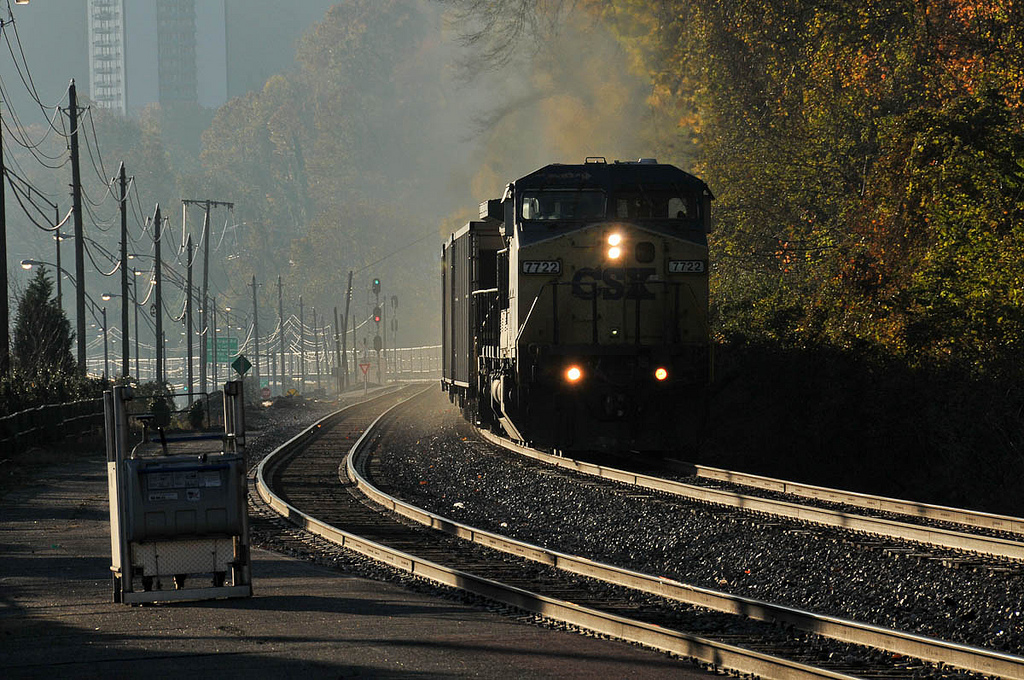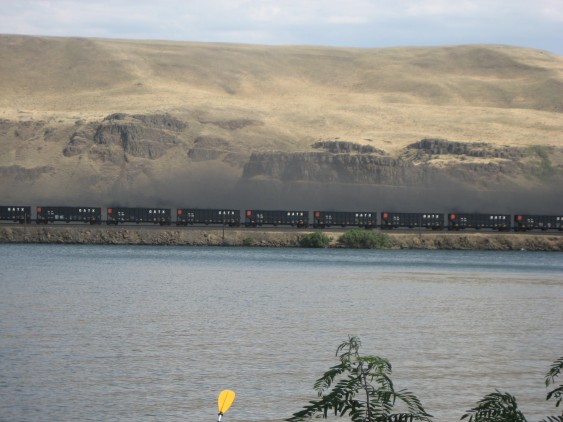Amid all the debate about the risk of coal trains spreading coal dust into areas near the railroad tracks, it’s often forgotten that the subject is controversial even within the industry. How to control coal dust—or whether it can be done at all to a meaningful degree—has been the subject of a long-running dispute between those who ship the coal and those who carry it. The coal companies or utilities that ship the coal are on one side and the railroads that carry it are on the other.
The controversy developed originally not because either side was concerned about the spread of coal dust into neighboring communities or rivers, but because coal dust accumulation had become so severe in places that it actually destabilized tracks, resulting in derailments or trackside fires. In response, the railways began levying fees on the coal shippers to cover the costs of treating the coal with a chemical spray designed to reduce dust emissions. The coal shippers objected, arguing that the fee was unfair and that the coal dust control techniques are ineffective.
The result was a years-long battle before a federal regulatory agency, the US Surface Transportation Board (STB). It was finally resolved in December 2013 when the STB ruled mostly in favor of the railways—the government denied the fee, but instead allowed the railways to require coal shippers to undertake the dust-reduction techniques the railways wanted. (The ruling is here.) The legal arcana may be of little interest outside law firms, but the research results that supported the decision are relevant to everyone with a stake in the coal exports debate.
The STB relied on the findings of a seven-month experiment called the Super Trial designed to answer some of the persistent questions about how effective coal dust suppression techniques really are. Although the government concluded that it is possible for shippers to substantially reduce coal dust, the research findings also leave open several major worries, among them:
- Coal dust from empty railcars, which may emit as much dust as loaded cars and which are never treated to reduce dust.
- Coal dust reduction techniques may not be effective at high speeds or over long distances.
- The studies tell us little about the extent of very small particle emissions, which may be the most risky to human health.
- Much of the methodology and results are proprietary, making them hard to evaluate.
It’s worth taking a closer look at the STB case because the answers can help us glean important information about what large-scale rail shipping would mean for coal dust in the Pacific Northwest.










